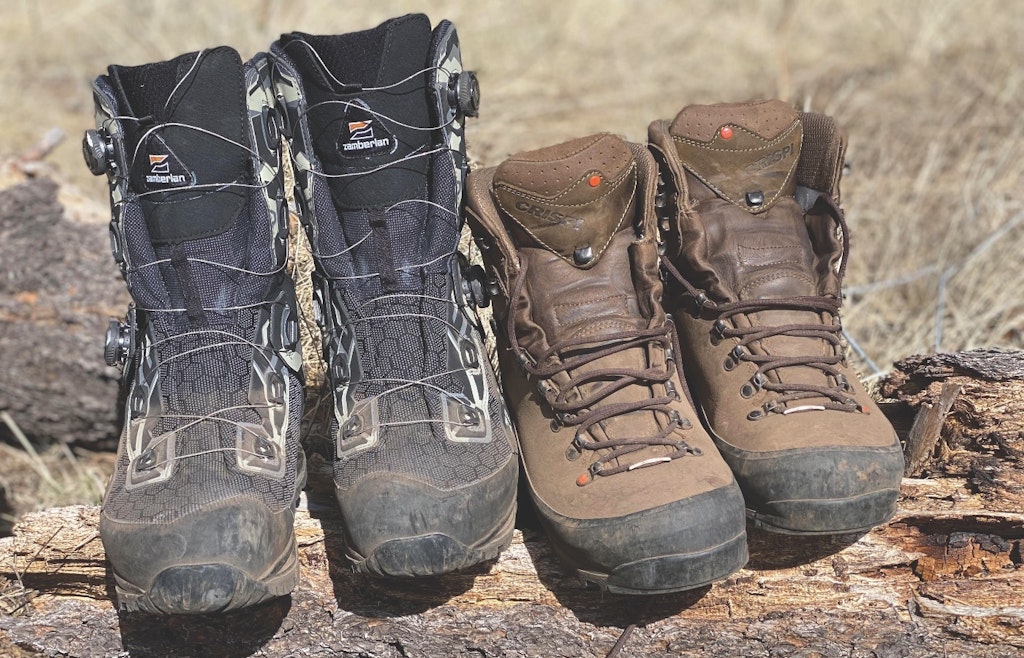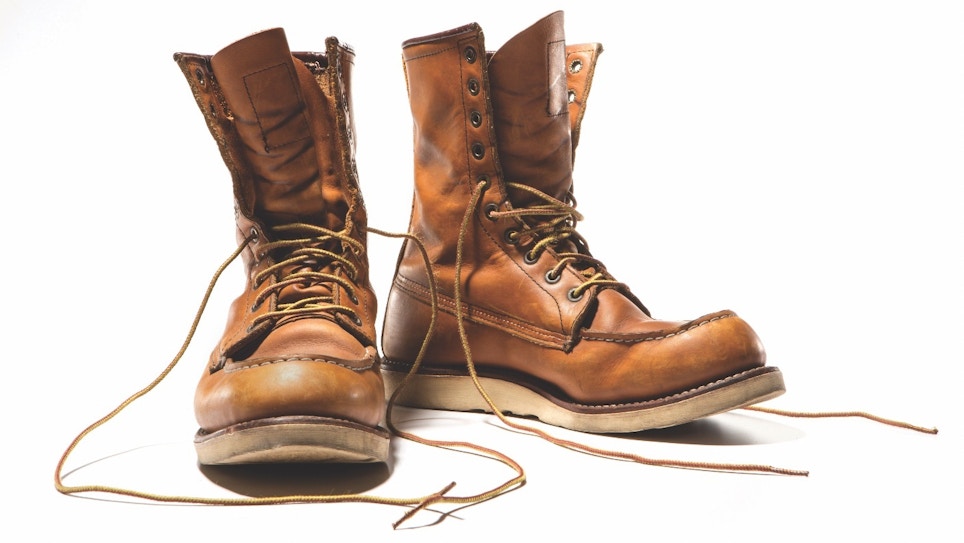I’m sure you’ve seen the situation before.
A customer comes in, really wants something in your store, but doesn’t quite have the money to afford it. They leave dejected, scouring the internet on their phone for a better price, and you miss out on a sale.
The digital age has brought us many new and useful sales tools since the early 2000s. First there was craigslist, which demolished the newspaper revenue model by taking away one of their top sources of revenue – the classified ads. Over a decade later, we now have many options online to buy and sell. Offer Up. Facebook Marketplace. Specialty sites like Auto Trader and Gun Broker … literally hundreds of places for people to sell their used items.
It’s obvious that there’s a huge market for used gear, and you should be taking advantage of it.
Selling used
It wasn’t too long ago that the average price for a full outfit of hunting apparel was under $100 for most applications. Today, it’s not uncommon for that number to exceed $1,000 and, even more often these days, as high as $1,500 to $2,000. The same is true with firearms and optics. $200 used to get you a pretty nice rifle scope. Today, that number is likely over $400. Firearms are another entity entirely. It is rare for a gun to lose value. Thinking of every firearm I have ever owned, I have never lost money and, numerous times, have made a significant amount of money on firearms that I have sold or traded.
The entire concept of the pawn shop business (or at least half of it) is based on this premise. People come in and take out a high-interest “loan” on their item of value, which the pawnbroker holds as collateral. Often, the person who brought the item in cannot afford to pay off the loan on the item, so the pawn broker sells it. There are numerous regulations in the pawnbroker business, and I am not suggesting you become a pawn shop, but it’s rather easy for you to become a dealer in lightly used items.
Here are some of the top items to consider dedicating a portion of the space in your retail store to.
Firearms
This one is a no-brainer. If you have a gun store, you are likely doing this already. Guns are rather easy to value, sell well and you are likely familiar with all of the processes involved in both looking up values and selling and transferring them to a new owner. If you don’t already take trades on firearms, I highly encourage you to do so. You are leaving money on the table from a large percent of existing and potential customers if you don’t.
Optics
There used to only be a handful of manufacturers of quality optics in the hunting and outdoors world. Names like Zeiss, Swarovski, Leupold, Weaver, Nikon, and Bushnell come readily to mind. Today, there are well over 100 different brands of rifle scopes, binoculars and spotting scopes. The market has also expanded into additional optics like thermal imaging and red-dot sights, as well as night vision scopes and binocular/monoculars.
A huge advantage to the marketplace and you is that, thanks to a few innovative manufacturers, almost all optics products today come with a lifetime, transferable warranty. That means that your used scope is covered under the same warranty as a new scope. This gives the consumer a huge incentive to buy.
Ponder this situation: A customer walks into your store and decides they want to buy a hunting rifle. They pick out a nice bolt action in a typical hunting caliber and you or your employee instinctively bring up optics. “Now that you have this nice rifle, let’s help you pick out a quality scope to put on it.” The customer, when asked about their budget, says, “I’m probably looking for something in the $100-$150 range.”
That’s a very limiting amount of money. While there are some quality optics at those levels, you certainly can get a much higher quality optic by adding $100 or $200 to that line. But because you have added a new policy in your store and will take trades on high-quality optics, you have a very nice 2-10x40 scope that’s in excellent condition and comes with a transferable warranty. It retailed for over $400 new but you can sell it to him with the rifle for $200.
The customer wins two ways. They now have a high-quality optic to put on their new hunting rifle, and they have saved a great deal of money while doing so. You win, of course, because you likely made money both on the trade-in end when you sell it to the new owner. Imagine the options you will have once your lines expand to things like high-end binoculars and spotting scopes.

Reloading Equipment
The option here can be two-fold. First, if you don’t sell reloading supplies, used equipment gives potential customers a reason to visit your store when they otherwise may not. Second, the price of ammunition continues to increase dramatically and doesn’t look to be coming down any time soon, causing many to explore loading their own. They’re going to buy from someone, and now you have the chance to expand your lines without a large inventory order.
Second, if you do sell reloading supplies, this can give you a chance to sell numerous accessories and supplies to someone after they buy.
Some suggestions to start with: Single stage presses tend to be rather simple products that last a long time. Look to make sure that all parts are included and functioning. Shotshell reloaders from high-quality brands like MEC, Hornady and Lyman are long lasting and have numerous accessories available for up-sells. Reloading Dies also make sense, but make sure you look through them with a flashlight to ensure they are clean and rust-free. Check the threads for damage, and make sure that the die can be broken down into its various components for both cleaning and replacement.
Apparel
There was a time when you could buy an entire hunting outfit for around $100-$150, but today it’s not uncommon to spend that on a high-tech shirt or pair of pants. Technical outerwear with Gore-Tex membranes starts at several hundred dollars and goes up from there. As we all know, every year new products are brought to the marketplace. There are new waterproof technologies, new camouflage patterns, new features on products, new methods of scent suppression and even clothing that masks the human electromagnetic field.
These types of items will likely never see the shelves of a goodwill store, and there are literally thousands of them posted on websites like Offer Up and Facebook Marketplace. One of the large challenges to people who buy on these sites are they often do not have the ability to thoroughly handle or view the item before they purchase unless the seller is rather close by. Another is that if there is some sort of unseen issue with the product, they are going to be stuck with it and have no recourse. That gives you an opportunity.
If you are going to sell lightly used apparel, there are several things you should focus on. The first are high-end clothing lines, like Sitka, KUIU and others. While Sitka can be found in retail stores, KUIU is an online-only brand. By gaining an assortment of gear with this and other online-only brand names, you are taking away some of the advantage that those manufacturers have by selling their product direct. You also give yourself a great opportunity for someone to buy more from you. Perhaps they need a new firearm, but have extra gear that they don’t use anymore. With the ever-increasing price of ammunition, there are numerous calibers that now retail close to and even over $100 per box. Again, a huge opportunity.
Low- and mid-priced apparel is also an opportunity. While you will not make the same margin on these items due to their initial lower sales price, it is an opportunity to gain a new customer by bringing them into your store when they otherwise might not visit. The opportunity for up-sells, memberships to a “buyers club” and the potential additional sales to that one customer alone is worth the effort.
When looking at used apparel, there are some important things to be aware of. Check all seems to look for rips or unraveling threads. Look for stains on the item that likely are permanent if they are still there. If it is a waterproof item and you can see the taped seams inside, check all of them for good adhesion and a lack of bubbles, which can signify a shorter lifespan. Check the item against a new item to see if there is a degree of fading to it. Finally, check all zippers, buttons, pockets, etc. for hidden issues that might not be initially obvious.
Boots
Boots are another product that have rapidly climbed up to the plane of premium pricing. While a good pair of boots that will last many years used to cost under $100, that now tends to be a starting point for the lowest-end products. Brands like Crispi, Kenetrek, Zamberlan and others often top the $500 mark with some going much, much higher.
If you are going to take trades on boots, you should make sure that they are in lightly-used condition. Some important things to look for are obvious repairs, scuffs, scratches and seam damage. Check the soles of the boot for uneven or excessive tread wear. If there is a lining, feel around inside for any noticeable, bumps, tears or unusual wear.
Finally, make sure all apparel and boots that you put out in your establishment are clean. You can wash them ahead of time, but it’s much easier to only take trades of clean gear.
Selling used items may require a slight paradigm shift on your part, but it can be a clear advantage for you and your customers.






